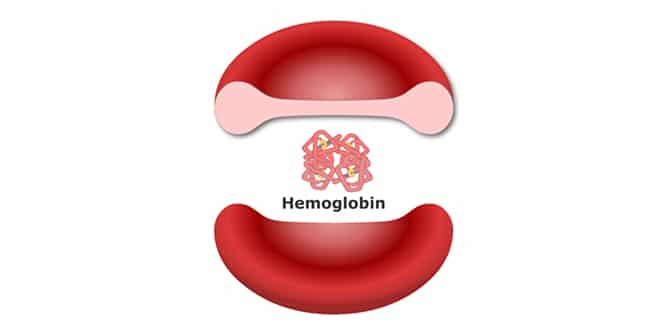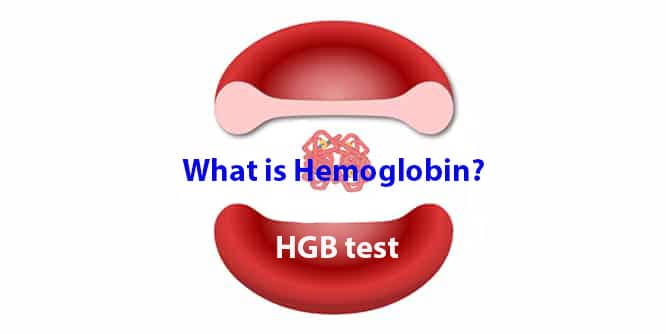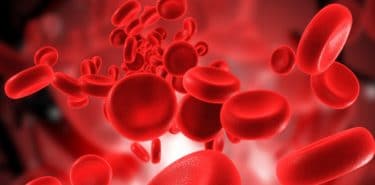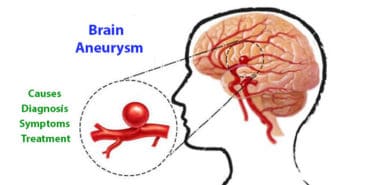Hemoglobin is a vital protein found in red blood cells which rich in iron, captures the oxygen drawn into the lungs and delivers it to the organs with blood. Changes in hemoglobin levels give very important information about general health. For this reason, hemoglobin values are also examined in blood tests for diagnosis of many diseases. Low hemoglobin levels are indicative of anemia. If you have problems such as extreme fatigue, shortness of breath, heart rhythm disorder and headache, this may be an indication that your hemoglobin level is low. In this case, your doctor may ask you to take the HGB test.
Table of Contents
What is hemoglobin?
Hemoglobin, (HGB) produced by bone marrow and stored in red blood cells. Its task is to carry oxygen to the body along with red blood cells; it also collects the carbon dioxide accumulated in the tissues and brings them to the lungs. If your HGB level is lower than normal, this means that your red blood cell count is low (anemia). This may include vitamin deficiency, bleeding and chronic diseases.
Hemoglobin deficiency can cause symptoms such as fatigue, dizziness or shortness of breath. If your HGB level is high, the main causes can be blood disorder (polycythemia vera), smoking, and diarrhea (dehydration).
What is the structure of hemoglobin?
Hemoglobin gives the blood its red color and is responsible for the shape of red blood cells that resemble round cups but have a thin center rather than a hole in the middle. In this way, red blood cells can move easily in the blood vessels. As in sickle cell anemia, hemoglobin anomaly leads to shape problems in red blood cells.
What is hemoglobinopathy?
Hemoglobinopathy is a genetic disorder that causes abnormality in structure of one of the chains of globin (the protein part of the hemoglobin molecule consisting of four different subunits) in the hemoglobin molecule. It can contain many diseases, cause circulatory problems and damage to some organs.

Normal value of hemoglobin HGB
In adult men, the average HGB level is slightly higher than in women. Measured in grams (d / dL) per deciliter.
- The normal hemoglobin value in women; 12.5 to 15.5
- Normal hemoglobin value in men; 13.5 to 17.5
Normal hemoglobin levels in the blood
Hemoglobin values according to age ranges:
| Age | Female range (g / dL) | Male range (g / dL) |
| 5-11 years | 11,9-15,0 | 11,9-15,0 |
| 11-18 years | 11,9-15,0 | 12,7-17,7 |
Hemoglobin values in infants
| 0-30 days | 13,4-9,9 | 13,4-9,9 |
| 31,160 days | 10.7-17.1 | 10.7-17.1 |
| 2-3 months | 9.0-14.1 | 9.0-14.1 |
| 3-6 months | 9,5-14,1 | 9,5-14,1 |
| 6-12 months | 11,3-14,1 | 11,3-14,1 |
Hemoglobin test
Hgb test is done by taking a sample of your blood to determine hemoglobin levels. It is part of a complete blood count (CBC) test. A CBC test also measures other important components of your blood, such as white blood cells and platelets. Abnormal levels of any of these cells may indicate underlying conditions or blood disorders.
- There may be other individuals with blood disorders in your family, such as sickle cell anemia.
- You may not have enough iron in your diet.
- You may have lost a lot of blood as a result of surgery or traumatic injury.
- There may be an infection.
- You may be pregnant.
- You may have a medical condition that may affect your Hgb level.
What is the hemoglobin test for?
- To check your overall health,
- diagnose a medical condition,
- monitor a medical condition.
What is Hemoglobin A1c test?
The hemoglobin A1c test (HbA1c) is a blood test used to measure blood glucose levels. It works both in the diagnosis of diabetes and in blood glucose measurement in patients with diabetes. When blood sugar levels rise, some glucose will bind to hemoglobin. The hemoglobin type to which it binds is hemoglobin A and the result of this combination is called glycosylated hemoglobin (A1c). As the blood sugar increases, the HbA1c test results also increase.
For a person without diabetes, a normal A1c level is below 5.7%. If your level of A1c is between 5.7% and 6.4%, you have prediabetes, which means that you have a high risk of developing diabetes in the future. An A1c level of 6.5% or higher indicates that you have diabetes. An A1c level of over 8% means that your diabetes is not well controlled and that you have a higher risk of developing diabetes complications. The A1c test is a standardized, reliable test that has been refined using clinical trial data.
What causes low hemoglobin levels?
Any condition or disease that affects your body’s ability to create red blood cells can cause low HGB levels. If your HGB level is lower than normal, you have anemia. There are many types of anemia that are composed of different causes. However, the most common cause of hemoglobin is iron deficiency anemia.
Other diseases that may cause hemoglobin are:
- Excessive anemia
- Cancer
- Anti-retroviral drugs and chemotherapy drugs used for HIV infection
- Chronic kidney disease
- Cirrhosis
- Hodgkin lymphoma
- Hypothyroidism
- Plumbism
- Leukemia
- Multiple myeloma
- Myelodysplastic syndromes
- Non-Hodgkin lymphoma
- Vitamin deficiency anemia
Diseases and conditions that cause the red blood cells in the body to be destroyed faster than their production:
- Spleen growth (splenomegaly)
- Hemolysis
- Porphyria
- Sickle cell anemia
- Thalassemia
- Vasculitis (blood vessel inflammation)
HGB deficiency may also be due to blood loss caused by:
- Bleeding of a wound
- Problems such as ulcers, cancer or hemorrhoids causing bleeding in digestive tract
- Bleeding in urinary tract
- Frequent blood donation
- Menorrhagia (heavy menstruation)
Low hemoglobin in infants
Newborn infants have a temporary anemia when they are 6-8 weeks old. This is because the red blood cells that are wasted when they are born are not renewed. As long as the baby has no other illness, it does not have a negative effect on his health. Infants may also have anemia due to very fast disintegration of cells. This condition, which causes the baby’s skin to turn yellow, is known as jaundice which mostly seen in mismatch of the mother and the baby’s blood type.
Symptoms of low hemoglobin
- Exhaustion
- Skin disease
- Shortness of breath (dyspnea)
- Abnormal or rapid heartbeat
- Chest pain
- Cold, swollen hands or feet
- Headache
- Problems with physical activity
Treatment of low hemoglobin
Treatment of anemia varies depending on the cause. If low hemoglobin level is caused by a disease, it should be treated first. Nutritional changes and supplements in the treatment of iron or vitamin deficiency can help solve the problem. Drugs and blood transfusions are among treatment options for aplastic anemia and antibiotics can be used in the case of hemolytic anemia.
Iron supplement
If you have a low HGB, you may need to take an oral iron supplement. However, taking too much iron can cause side effects such as cirrhosis, liver diseases, constipation, nausea and vomiting. Depending on the underlying condition that causes your hemoglobin low, you should begin to see a difference in your iron level from about one week to one month. Decide the appropriate dose with your doctor and avoid taking more than 25 mg at a time. The recommended dose is 8 mg per day for men and up to 18 mg per day for women. The recommended dose for pregnant women is 27 mg daily.
Always keep iron supplements out of the reach of children. Children have lower blood volumes, which makes them more vulnerable to iron poisoning. If your child has mistakenly received iron supplements, call your doctor immediately.
What are the foods that increase hemoglobin levels?
Iron plays an important role in HGB production. The first step to increase your hemoglobin level is to start eating more iron-containing foods. Foods with a high iron content are:
- Liver and offal
- Shellfish
- Broccoli
- Ornamental kale
- Green beans
- Cabbage
- Beans and lentils
- Bean curd
- Fried potatoes
- fortified grains and enriched bread
Folate is a vitamin B that your body uses to produce and produce red blood cells containing HGB. Without adequate folate, your red blood cells will not mature. This may lead to folate deficiency anemia and low hemoglobin levels.
Foods containing folate:
- Beef
- Spinach
- Black eyed pea
- Avocado
- Lettuce
- Rice
- Beans
- Peanut
Causes of high hemoglobin count
HGB levels increase as your body needs oxygen. This may be due to a disease that affects your heart or lung function, your living environment, or your lifestyle preferences. Possible causes of hemoglobin elevation include:
- To live in places with less oxygen in the air at high altitudes
- Smoking or consuming different tobacco products.
- Chronic obstructive pulmonary disease (COPD): A condition that prevents air from entering your lungs.
- Stay seriously dehydrated
- Heart failure and other heart diseases
- Use high erythropoietin to improve physical performance.
- Liver cancer
- Kidney cancer
- Emphysema and other lung diseases
- Polycythemia vera
What is polycythemia vera?
This is a slow-growing blood cancer in which your bone marrow makes too many red blood cells. These excess cells thicken your blood, slowing its flow. It may be due to genetic reasons as well as can be seen in people having low blood oxygen levels for a long time. If the blood flows too slow or clots, the cells cannot get enough oxygen. This may cause serious complications such as heart attack, stroke and heart failure. Polycythemia vera is most commonly seen in men over 60 years of age.
Symptoms of high hemoglobin count
- Itching
- Headache
- Dizziness
- Easily bruising or bleeding
- Sweating more than normal
- Painful joint swelling
- Abnormal weight loss
- Yellowing of eyes and skin
- Feeling tired
- A purple or reddish tone on the skin
High hemoglobin count treatment
If a medical condition causes an elevated HGB level, treating this condition will help o restore the hemoglobin level. In addition, there are several methods that can be used to reduce hemoglobin:
- Phlebotomy: This is a blood collection procedure. The healthcare professional transfers the blood drawn from you into a bag or into a container, until your hemoglobin level returns to normal. One of the main goals of this treatment is to reduce the risk of blood clots and related adverse events. Phlebotomy is still used in the treatment of diseases that cause hemoglobin elevation such as polycythemia vera. It is also used in the treatment of conditions such as chronic lung diseases and cyanotic heart disease which cause hemoglobin elevation.
- Drink plenty of water: When you are dehydrated, your hemoglobin level rises. This is due to a decrease in blood volume. Acute dehydration may increase the hemoglobin concentration by 10-15%. Especially during exercise, drinking plenty of water is important to maintain normal hemoglobin levels.
- Quit smoking: If you smoke and your hemoglobin is increasing chronically, the best way to reduce it is to stop smoking. In the researches, it was observed that hemoglobin levels of people who quit smoking returned to normal.
Hemoglobin diseases
Hemoglobin C disease
It is usually seen in black race. For the development of the disease, both the mother and the father should have a diseased gene. In general, the symptoms are few. The severity of anemia changes. In people with this disease, especially in children, abdominal and joint pain, spleen expansion and mild jaundice can be seen. There are no serious crises as in sickle cell anemia but it can cause gallbladder stones.
Sickle cell anemia
Sickle cell anemia is a serious disease caused by a mutation in the gene in the beta chain of hemoglobin. In this disease, red blood cells take the shape of a crescent or sickle. Due to these forms, they block the small blood vessels and prevent blood flow. Sickle cell anemia causes inflammation, blood clots, red blood cell damage, lack of oxygen, and ultimately, organ damage. Intermittent attacks may cause severe pain, pulmonary insufficiency and stroke.
Hemoglobin S-C disease
Hemoglobin S-C disease occurs in people with a copy of the gene for sickle cell anemia and a copy of the hemoglobin C disease gene. This disease is more common than hemoglobin C disease and its symptoms are the same as sickle cell anemia yet milder. However, can cause blood in the urine, spleen growth, retinal bleeding, and problems in the hip joint.
Hemoglobin E disease
Hemoglobin E disease primarily affects people of Southeast Asian origin. This disease causes mild anemia, but none of the other symptoms of sickle cell anemia and hemoglobin C are present.




